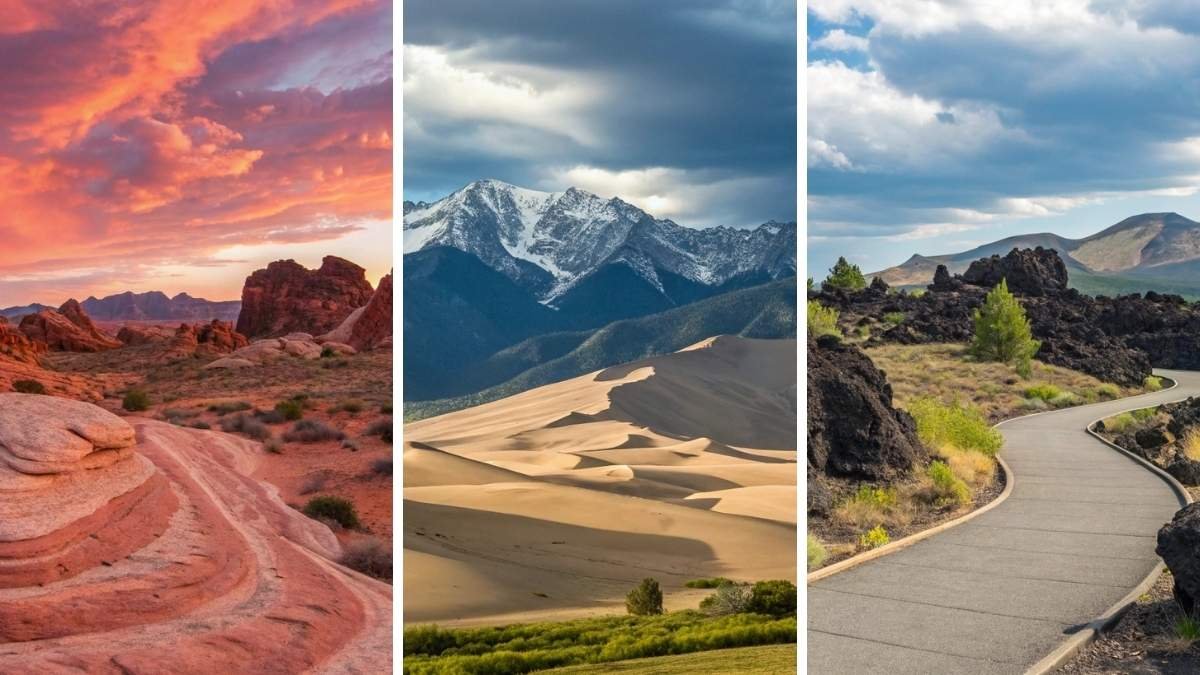
Some places don’t just take your breath away—they leave you wondering how they even exist on the same planet. These are the corners of America where cell service fades, silence takes over, and the landscape feels completely untamed.
Where the ground glows white, red, or black under skies so vast they almost swallow you whole. You won’t find snack bars or gift shops here—just raw, wild beauty that messes with your sense of scale, time, and reality. If you’ve been craving something deeper than a road trip and wilder than a trail hike, these remote wonders are calling—loudly.
1. Gates of the Arctic National Park, Alaska
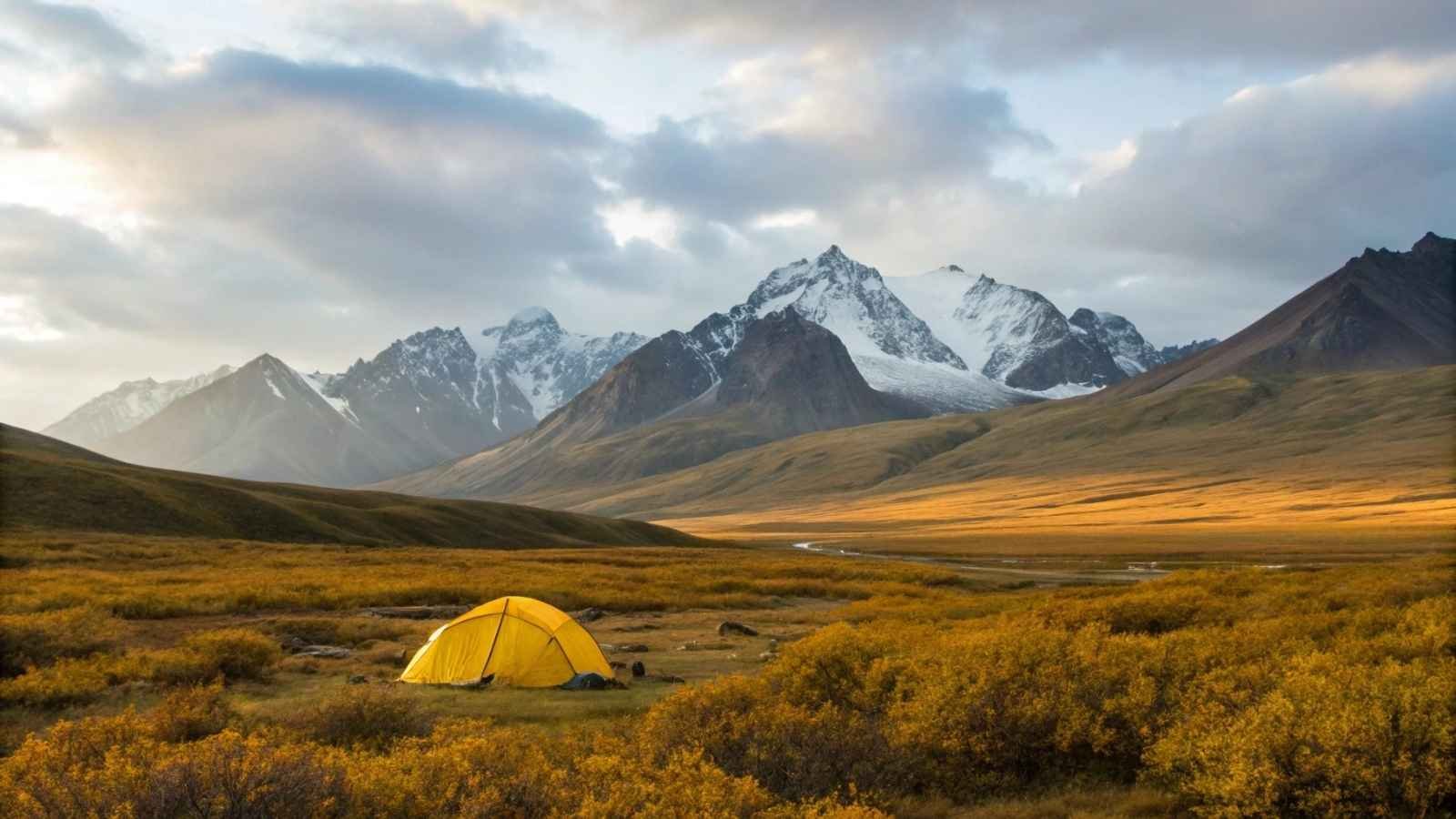
This place doesn’t just feel remote—it is remote. No roads, no trails, no signs of civilization for miles. Gates of the Arctic is more than 8 million acres of untouched wilderness above the Arctic Circle. It’s a land of glacier-carved valleys, dramatic granite spires, and tundra that stretches to the horizon. You’re not going to find vending machines or marked hiking paths here—just pure, raw nature, as wild as it gets in the United States.
For those who crave solitude, Gates of the Arctic delivers. You need to fly in by bush plane, and once you’re there, it’s just you and the land. The surreal quiet, the wildlife (think caribou, grizzlies, and wolves), and the 24-hour sunlight in summer give it an eerie, almost dreamlike vibe. It’s not for the faint-hearted, but for the bold, this is one of the most profound nature experiences in North America.
The otherworldly part? The terrain itself. It’s not just a national park—it’s a planetary escape. You can sit atop a wind-scoured ridge and feel like you’re the last person on Earth. You’ll swear you’re on a Martian tundra, especially in the early morning mist or under the glow of the midnight sun.
Quick Facts:
- Best Months to Visit: June to August (brief summer window)
- Accessibility: Requires a flight via bush plane from Fairbanks or Bettles
- Permits Required: No entry permit, but backcountry safety prep is essential
- What to Bring: Full wilderness gear, satellite phone, bear-proof containers
- Highlights: Arrigetch Peaks, Alatna River, complete solitude
- Travel Tip: Go with a guide if you’re not experienced in remote wilderness survival
2. The Wave, Arizona
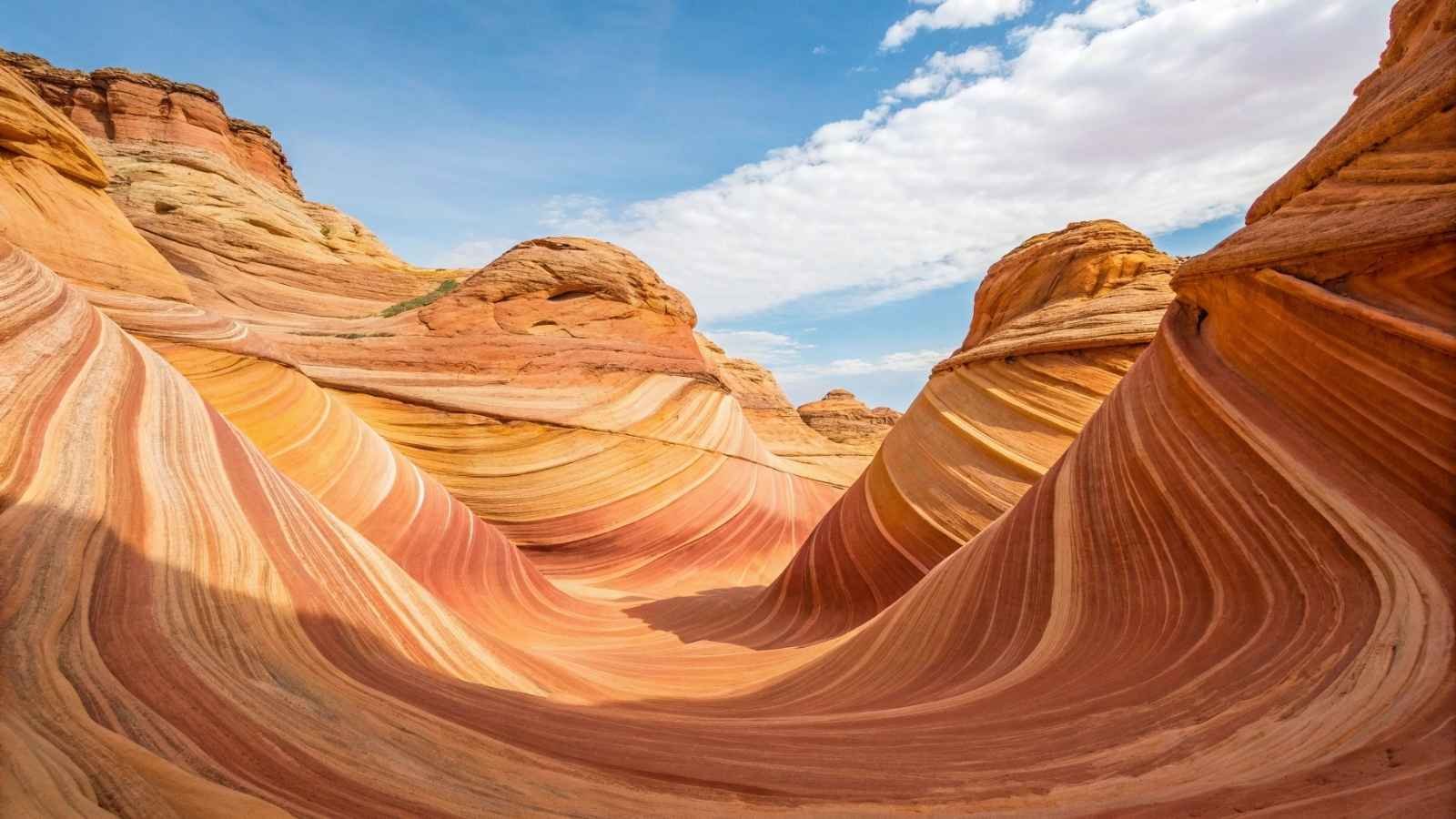
The Wave isn’t just a hike—it’s a portal to another dimension. Hidden in the Coyote Buttes North area of the Arizona/Utah border, this rock formation looks like wind-blown ribbons frozen in time, swirling in impossible shades of red, pink, and gold. It’s so stunning and fragile that only 20 visitors are allowed per day through a lottery system.
When you walk through The Wave, you feel like you’ve entered a liquid sandstone ocean, solidified mid-motion. The ridges flow like brushstrokes, and the silence amplifies the surrealism. There’s no shade, no signs, and no water sources, which adds to its alien isolation. But the reward is immense—photos don’t do it justice.
Even the journey feels like a sci-fi expedition. You navigate the open desert with a map and GPS, avoiding false trails and watching out for flash storms. But once you see those striated walls rise out of the ground, it feels like stepping onto the surface of Jupiter’s moon Europa—just warmer.
Quick Facts:
- Best Months to Visit: March to May and September to November
- Accessibility: 6-mile round-trip hike from Wire Pass Trailhead (permit required)
- Permit System: Daily lottery through recreation.gov
- What to Bring: Sun protection, GPS, 4+ liters of water, permit printout
- Highlights: The Wave, Second Wave, Dinosaur Tracks
- Travel Tip: Use Kanab, Utah, as your base—it’s the closest town with accommodations
3. White Sands National Park, New Mexico
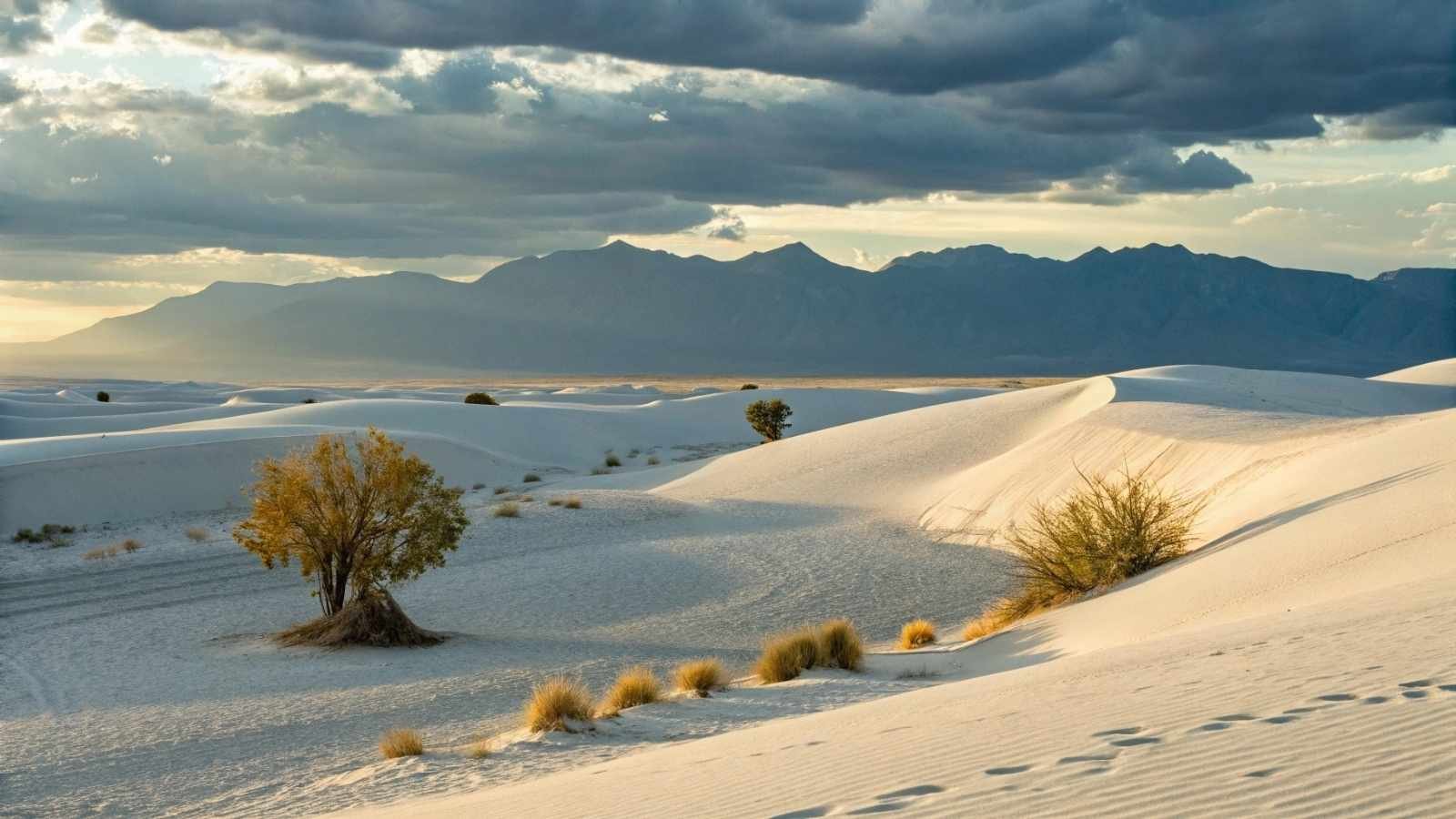
If the moon had dunes, they’d look like this. White Sands is the largest gypsum dune field in the world, with wave after wave of blinding white hills stretching across the Chihuahuan Desert. The color, the texture, the silence—it all feels so removed from what we typically associate with “America.”
Gypsum reflects sunlight like snow, and when the wind shapes the dunes into sinuous ridges, it creates an almost lunar vibe. The ground is soft, cool underfoot even in the heat, and walking across the sand feels otherworldly. Whether you’re sledding down dunes or watching the sunset cast lilac shadows, you can’t help but feel like you’re somewhere far beyond Earth.
There’s an eerie stillness here, too. On quieter days, the silence is total, broken only by your own footsteps or the rustle of a yucca plant. As the sun sets and shadows stretch across the dunes, you’re not just visiting a national park—you’re stepping into a dreamscape.
Quick Facts:
- Best Months to Visit: October to April (cooler weather, fewer crowds)
- Accessibility: Easily accessible by car via Highway 70 near Alamogordo
- Permits Required: None for day visits; camping permit needed for backcountry
- What to Bring: Sunglasses, water, hat, white balance setting for photos
- Highlights: Dune sledding, full moon hikes, surreal sunrises
- Travel Tip: Visit during a full moon night hike for an unforgettable glow
4. Craters of the Moon National Monument, Idaho
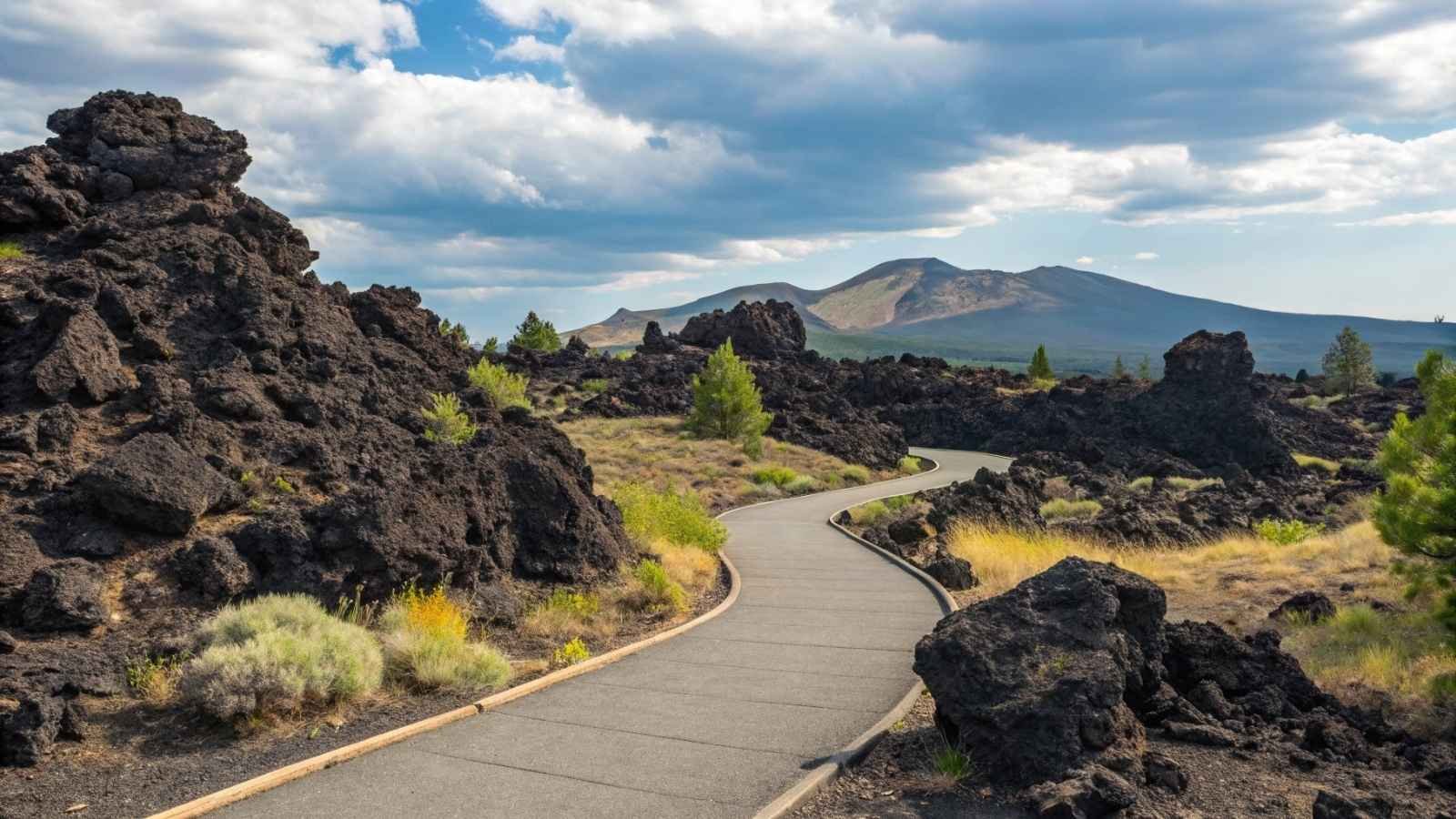
Even NASA has used this place to simulate moon missions. Craters of the Moon is a sprawling lava field, filled with twisted rock, jagged craters, underground caves, and surreal volcanic cones. The black basalt landscape stretches for miles, making it feel like you’ve landed on a rogue planet caught somewhere between Earth and deep space.
This is one of the few places in the U.S. where you can walk through lava tubes, climb mini volcanoes, and stare out over miles of wrinkled, burned terrain without seeing a single tree or structure. It’s like Earth forgot this place existed—and that’s exactly what makes it so gripping.
And then there’s the silence. Walk out on the Inferno Cone trail at dusk and look around—you’ll feel like the last explorer in a forgotten galaxy. Even the plants here look foreign: gnarled shrubs, desert lichens, and silvery moss that seems to thrive on nothing.
Quick Facts:
- Best Months to Visit: May to October (avoid snow-covered trails)
- Accessibility: Well-maintained scenic loop drive; some trails paved
- Permits Required: None for general access; cave permits required
- What to Bring: Flashlight/headlamp, hiking shoes, sun protection
- Highlights: Spatter cones, lava tubes, Devil’s Orchard
- Travel Tip: Stargazing here is phenomenal—bring a telescope if you can
5. Badlands National Park, South Dakota
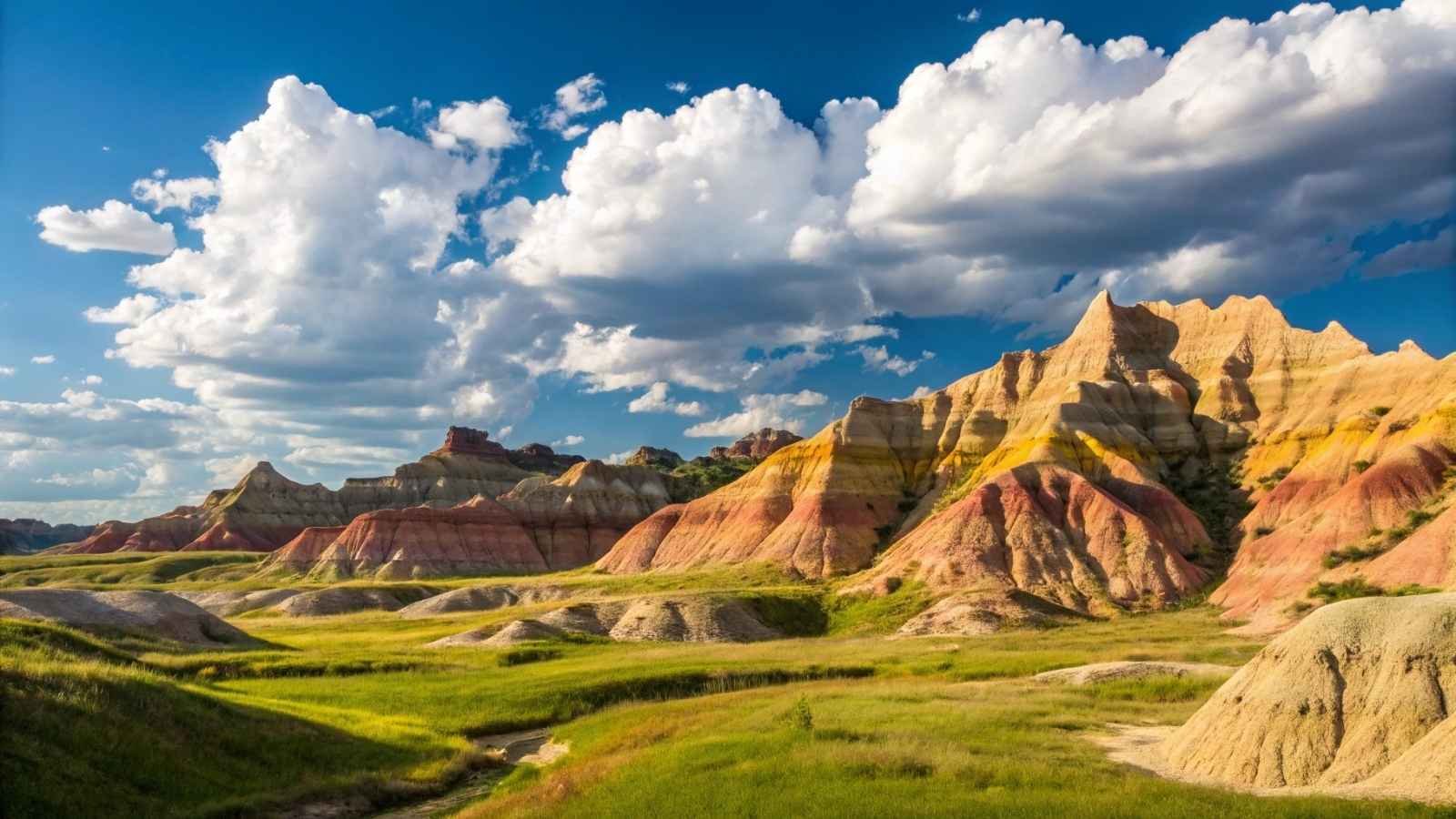
Badlands isn’t a nickname—it’s a warning and a promise. This dramatic landscape of striped cliffs, eroded pinnacles, and dusty gullies looks like a science fiction movie set. The terrain is ancient, raw, and haunting—layers of rock record millions of years of geologic history, all baked under a wide, unforgiving sky.
From above, the land seems to crack open in jagged waves of ochre, red, gray, and gold. Hike down into the valleys and you’re suddenly surrounded by knife-edged buttes and whispering winds. It’s hypnotic. You don’t walk through the Badlands—you wander, constantly feeling like you’re trespassing on another world.
And then there’s the wildlife. Bison, bighorn sheep, prairie dogs—they all roam freely, often making surprise appearances against this extraterrestrial backdrop. Sunrise and sunset are especially unreal: colors shift like oil spills across the layered rock, and the silence during those hours feels sacred.
Quick Facts:
- Best Months to Visit: April to June and September to October
- Accessibility: Scenic drives with overlook points, plus rugged trails
- Permits Required: Entry fee applies; no backcountry permit needed for hiking
- What to Bring: Binoculars, sturdy boots, weather protection
- Highlights: Notch Trail, Door Trail, Sage Creek Wilderness
- Travel Tip: Camp overnight—the night sky here is among the darkest in the U.S.
6. Alvord Desert, Oregon
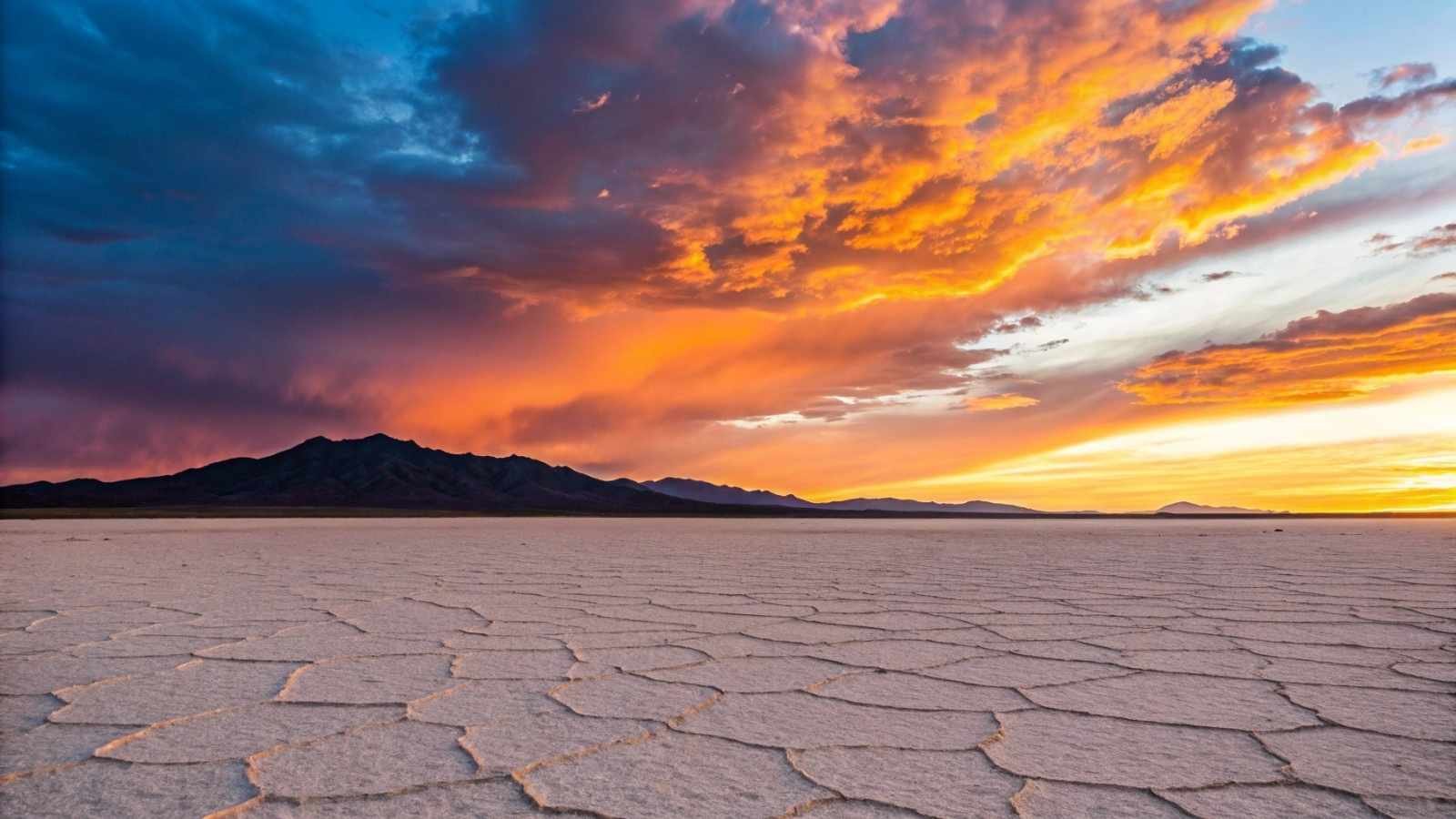
You know a place is wild when your GPS gives up halfway there. Tucked into southeastern Oregon, the Alvord Desert is a massive dried-up lakebed, a 12-by-7-mile cracked white expanse backed by the towering Steens Mountain. There are no fences. No rangers. No buildings. Just sky and silence.
Standing here, it’s easy to forget you’re even on Earth. The cracked saltpan beneath your feet glows silver under the sun, and when the wind dies down, the absolute stillness can be surreal. Some visitors bring camp chairs and just sit in the emptiness for hours, soaking in the still, soundless wonder. At night? Pure stars. The Milky Way looks close enough to touch.
And despite how stark it is, it’s surprisingly friendly to the off-grid camper or the adventurous traveler. Hot springs nearby offer a well-earned soak after hours of exploration. And if you’ve ever wanted to drive in a straight line at full speed with nothing around you—this is your place.
Quick Facts:
- Best Months to Visit: Late June to early October (dry and warm)
- Accessibility: Gravel roads; high-clearance vehicle recommended
- Permits Required: None
- What to Bring: Shade tent, plenty of water, emergency supplies
- Highlights: Alvord Hot Springs, Steens Mountain views, absolute solitude
- Travel Tip: Don’t rely on cell service—download maps in advance
7. Valley of Fire State Park, Nevada
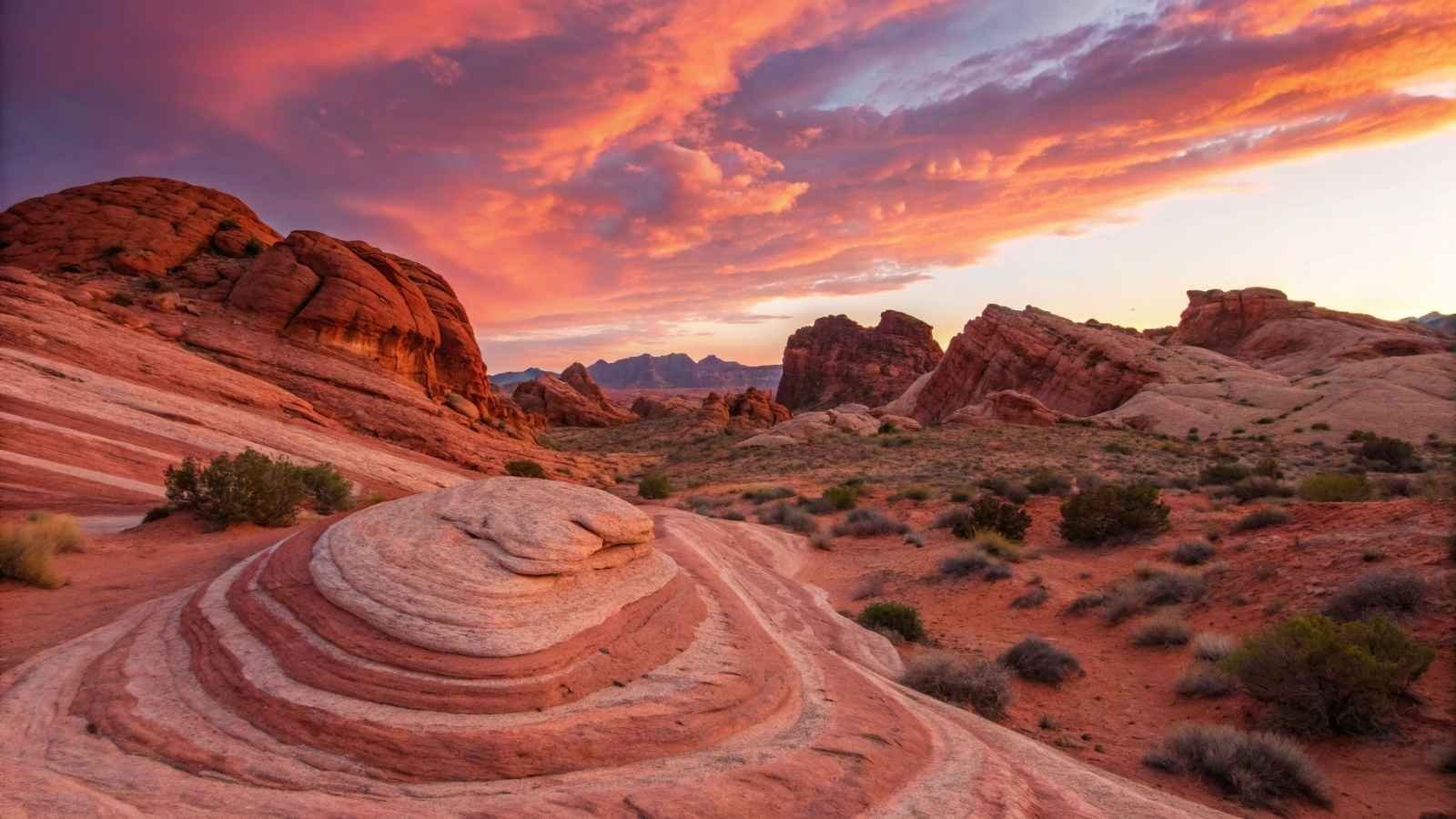
Just an hour from Las Vegas, and you’d think you’re stepping into a Ridley Scott film set. Valley of Fire blazes with red rock formations, slot canyons, ancient petroglyphs, and bizarre arches that look more alien than earthly. The terrain undulates in vibrant waves of crimson, orange, and lavender, as if nature painted with neon.
But it’s not just the color that feels unearthly—it’s the formations themselves. Wind-carved shapes like the Elephant Rock and Fire Wave don’t just look strange; they challenge your sense of scale and logic. You turn a corner and suddenly, you’re in a Martian amphitheater.
Despite its name, it’s not just a fiery blast furnace. Go early morning or near dusk, and the colors shift dramatically in soft golden light, turning the whole place into a shape-shifting dreamscape. It’s cinematic, yes—but also grounding in its raw desert energy.
Quick Facts:
- Best Months to Visit: October to April (cooler temperatures)
- Accessibility: Easy by car from Las Vegas; paved roads throughout the park
- Permits Required: Entry fee required
- What to Bring: Water, wide-brim hat, camera for rock formations
- Highlights: Fire Wave, Atlatl Rock, White Domes Trail
- Travel Tip: Arrive at sunrise for the most dramatic color contrasts
8. Channel Islands National Park, California
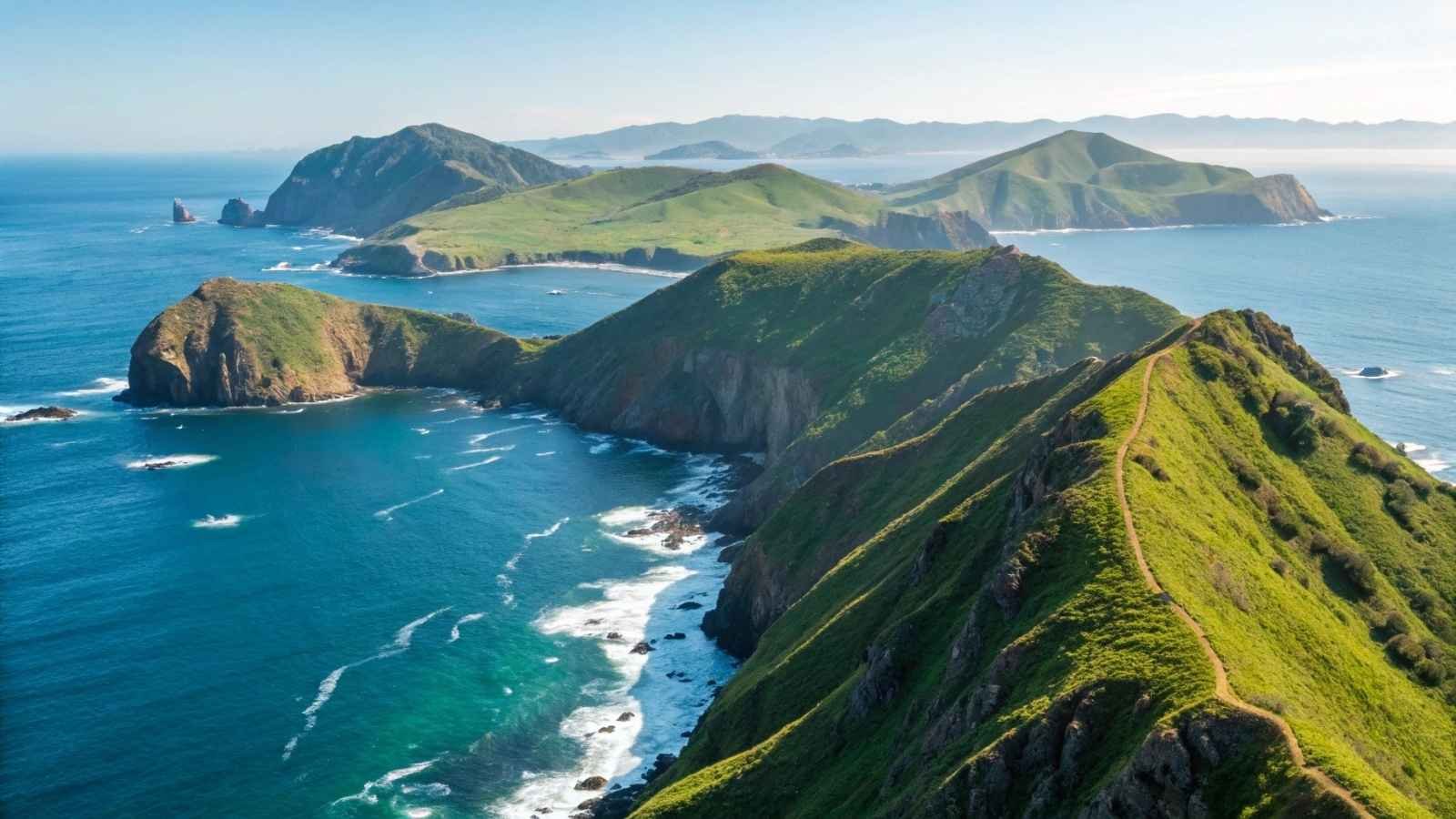
Just off the coast of Southern California lies a forgotten archipelago—and once you’re there, it feels like you’ve left the mainland behind in every possible way. Channel Islands National Park is made up of five rugged islands that combine wind-sculpted cliffs, wildflower-carpeted hills, and sea caves with a rich dose of biological isolation.
These islands have species found nowhere else on Earth, from the tiny island fox to neon-colored sea anemones. There are no cars, no restaurants, no gift shops—just you and raw Pacific nature. Getting here is a commitment (usually by ferry or private boat), but that’s part of the magic. The sense of separation is instant and intense.
Sea kayaking through the massive painted caves or snorkeling through kelp forests gives off a kind of underwater sci-fi vibe. And above the surface, the wind-swept ridges and sea cliffs feel ancient, like remnants of some long-lost Earth 2.0.
Quick Facts:
- Best Months to Visit: May to September (calm seas, better wildlife spotting)
- Accessibility: Ferry from Ventura or Oxnard; no cars on islands
- Permits Required: Ferry reservation; camping permits for overnight stays
- What to Bring: Motion sickness meds, sunblock, all food and water
- Highlights: Painted Cave, Scorpion Anchorage, endemic wildlife
- Travel Tip: Stay overnight on Santa Cruz Island for a starlit sky that rivals any planetarium
9. Great Sand Dunes National Park, Colorado
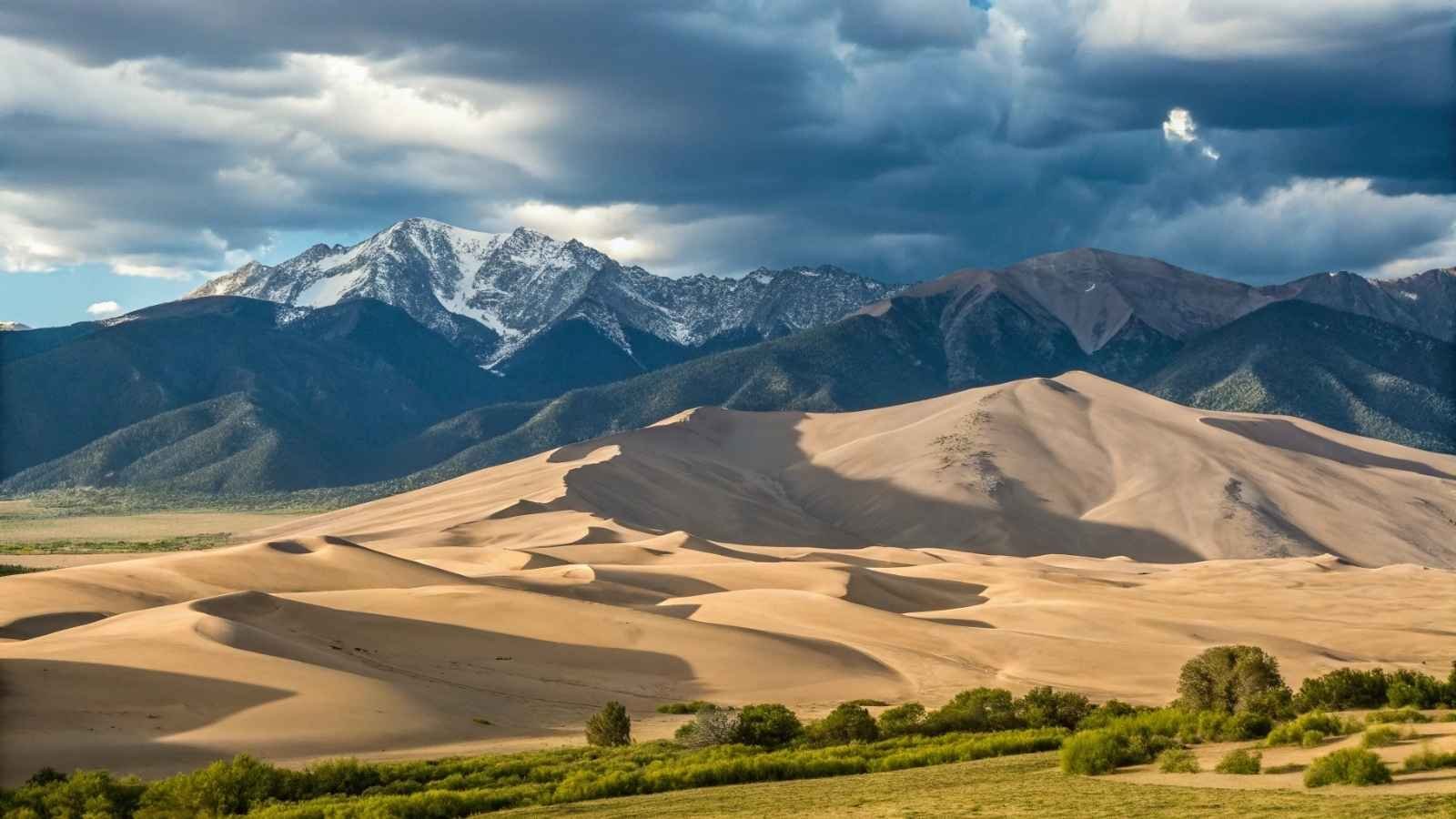
You expect mountains in Colorado. What you don’t expect are 750-foot-high dunes—some of the tallest in North America—rising out of nowhere, backdropped by snowy peaks. Great Sand Dunes National Park is the kind of place that makes your brain stutter: Is this the Sahara? Tibet? Or Tatooine?
The juxtaposition of ecosystems is unlike anywhere else. Hike to the top of a dune, and behind you are pine forests and alpine ridges; in front, an ocean of golden sand. Every step is a workout, but reaching the summit of Star Dune or High Dune pays off with a surreal 360° view that feels positively interstellar.
Then there’s Medano Creek, which flows at the base in spring and early summer, turning the whole park into a bizarre inland beach. Children splash, people float, and above them, towering dunes loom like giant sand waves frozen in motion. Wild, weird, and wonderful.
Quick Facts:
- Best Months to Visit: May to early July (for Medano Creek), September (cooler hikes)
- Accessibility: Paved roads lead to the visitor center and the dunes
- Permits Required: Entry fee; permits for backcountry camping
- What to Bring: Sandboard or sled, water shoes, windbreaker
- Highlights: Star Dune, Medano Creek, stargazing
- Travel Tip: Arrive early or late to avoid sand temperatures that can exceed 150°F midday
10. Grand Staircase-Escalante National Monument, Utah
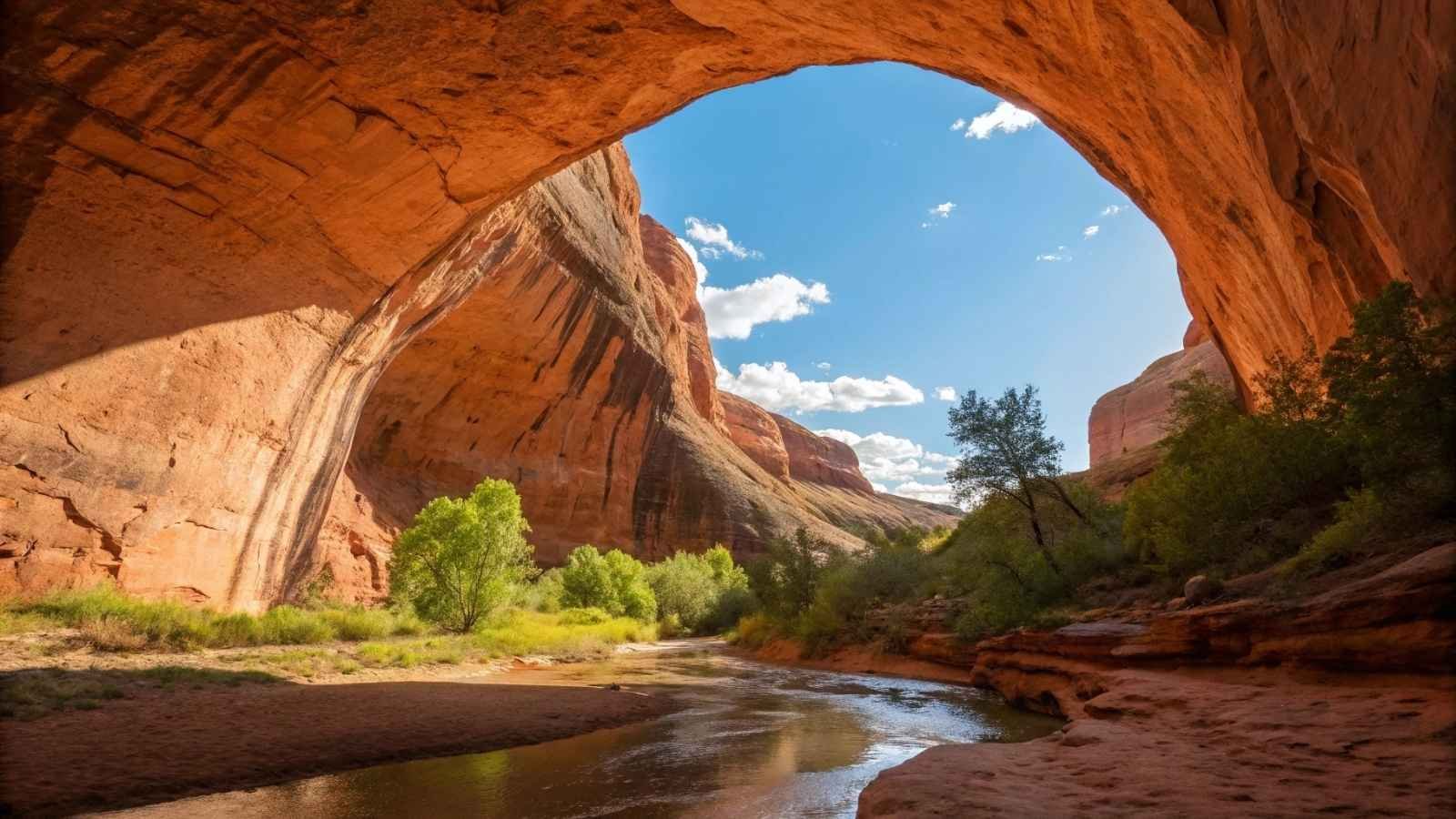
Grand Staircase is less a single location and more a vast geological riddle box, unfolding in waves of rugged canyons, hidden arches, slot ravines, and rainbow-hued cliffs. It’s bigger than some U.S. states, and yet many areas remain unmapped or lightly trodden—perfect for travelers craving that edge-of-the-map feeling.
Exploring here means embracing unpredictability. You could spend a whole day following the curves of a slot canyon like Peek-a-Boo Gulch, scrambling through narrow sandstone corridors where you can touch both walls at once. Or hike into hoodoo-filled badlands that look like a mashup of Star Wars and Dr. Seuss.
There’s a sense of vastness that humbles you. The silence here feels deeper, the stars brighter, the solitude more profound. It’s not a quick-snap kind of place—it’s a deep-dive destination for those who crave wonder and aren’t afraid of dust on their boots.
Quick Facts:
- Best Months to Visit: April to June and September to October
- Accessibility: Varies—some areas require 4WD and navigation skills
- Permits Required: None for most day hikes; overnight trips may require BLM permits
- What to Bring: Maps, extra fuel, emergency gear, plenty of water
- Highlights: Zebra Slot Canyon, Devil’s Garden, Cosmic Ashtray
- Travel Tip: Stop at one of the BLM visitor centers for route advice and updated trail conditions






